Now that China’s ‘A4 waist’ online challenge has swept across Sina Weibo, it is time for another trend to show off how skinny you are: the ‘iPhone 6 legs’ (iPhone6腿) rage. Despite the wide propagation of slimming trends on Chinese social media, voices opposing these sort of hypes are growing louder.
A new trend has taken over Chinese social media. Over the past few days, ‘iPhone 6 legs’ have become a trending topic, with thousands of female netizens posting pictures that show how their smartphones can cover their skinny legs. Although many netizens ridicule the trend, there are also some who worry that these hypes propagate unhealthy beauty standards.
From A4 waist to iPhone legs
Lately, China has seen several trends that have propagated a thin figure as the ruling beauty standard. Since September 2015, an online challenge swept across Sina Weibo, WeChat and other major social media in China, where the goal was for people to try and reach their belly button backhand. Soon, two new challenges emerged, that focused on putting coins on your collarbone and holding a pencil with the bottom line of your breast. The latter is believed to come from Japan, but was no less popular amongst Chinese netizens.
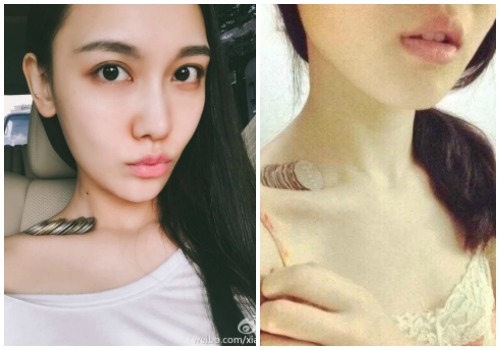
Along with these challenges came an online obsession with the so-called ‘mermaid line’, ‘vest line’ and ‘bikini bridge’ – the former two referring to the shape of one’s abs, the latter concerns the visible ends of one’s pelvis.
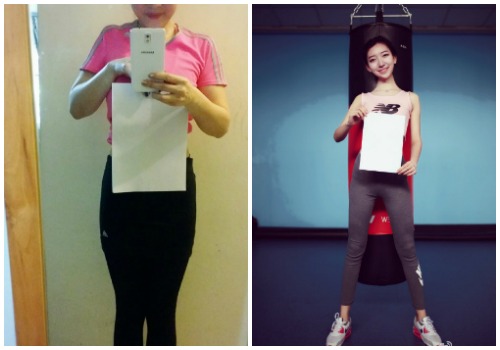
Recently, ‘A4 waist’ (A4腰) pictures took Chinese social media by storm. For this rage, girls posed with an A4 paper before their waist; if there was no waist visible besides the paper, their figure was slim enough for the challenge.
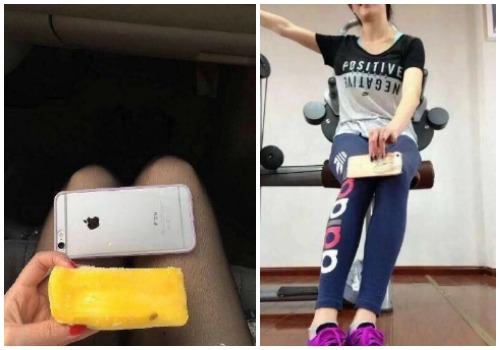
Social media’s propagation of beauty criteria does not stop here. Another hype has now become trending on Weibo, where girls are showing off their legs with an iPhone6 in front of it. The supposed rule is: when the iPhone6 covers the width of your legs (knee area), your legs conform to the standard beauty ideal.
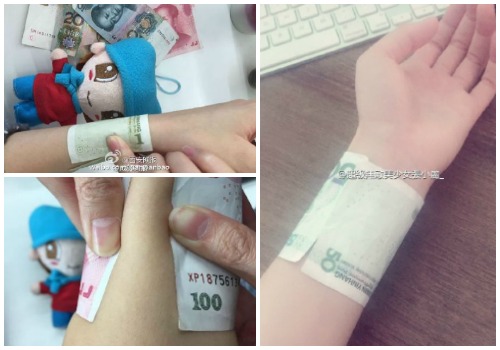
Trends like these are quickly followed by others. Sina Weibo now also shows a series of photos where young girls are wrapping paper money around their wrist to show off their slenderness under the hashtag of ’50 RMB Wrist’ (50元手腕).
Unhealthy standards
On Weibo, not all netizens are pleased with yet another beauty trend. “These everyday trends bore me,” one netizen says: “Your standard of beauty is not healthy!”
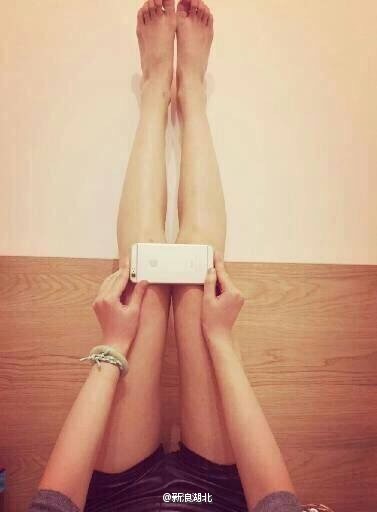
Weibo’s recent trends in attaining a slim figure have resulted in a tremendous amount of individual postings, where mostly women are either showing off their perfect figure by succeeding the challenge, or where they are expressing their firm resolution to achieve these results. Influential social media users have released various tips to acquire the perfect figure. As iRead (@壹读), a popular media source on Sina Weibo, states in its video: “One no longer has the courage to post to their friends if one does not have the right body lines.”
Although people are still posting pictures hiding their waist behind a vertically held piece of paper and public Weibo accounts still provide tips to slim your waist, the voices opposing these kinds of trends are becoming louder; Chinese (social) media are becoming seemingly more aware about the beauty ideals it promotes.
Most importantly, people now voice their concerns about the potential health risks of China’s recent slimming trends. One article on Weibo has suggested that trends like the A4 waist could potentially lead to eating disorders, stating that 95% of people suffering from them are young girls who are obsessed with losing weight to meet the ruling “beauty standards”.
iPad legs
But health is not the only concern. Feminist online platform Voice of Feminists (@女权之声) recently published two articles (article 1; article 2) criticising the new trends. They pointed out that such beauty standards are not just “unhealthy”, but also indicate that women are being objectified in a masculine society. The articles argue against homogeneous and male-dominated beauty standards. They have also launched a campaign for women to love their waists – regardless of whether it is A4 size or not.
The A4 waist phenomenon has now also traveled to other international social media platforms, and netizens outside of China post their responses to the trend on Facebook and Twitter. Some women have posed with their diploma’s in front of their waists, propagating that brains go above beauty. Their message, similar to that of Voice of Feminists, is yet again imported back to Sina Weibo. iRead and Nouvelle d’Europe (@欧洲时报) both published articles about these foreign netizens, stating that “A4 paper is only made to prove how clever and creative you can be. Women don’t need to be compared by a fuc*ing sheet of paper”.
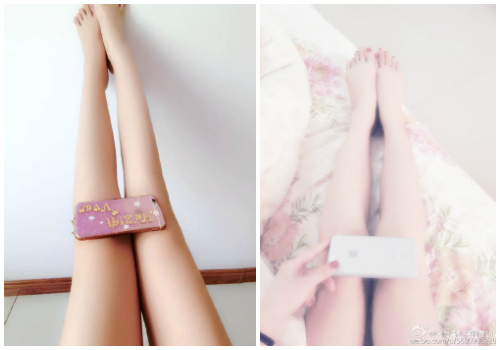
With the new ‘iPhone6 trend’, many netizens seem fed up with China’s skinny trends, calling the girls who post these pictures “brain-dead”, and wondering how the general beauty trend has come to be so unrealistic.
Some netizens have a different problem, with many stating: “I don’t even have an iPhone 6.” Other netizens want to start their own trends: “I don’t have iPhone 6 legs,” one Weibo users comment: “but I have iPad legs.”
“Forget the iPhone 6 legs,” yet another says: “These are Macbook legs.”
One thing’s for sure – with China’s latest skinny trend, everyone seems to wants Apples.
– By Diandian Guo & Manya Koetse
©2016 Whatsonweibo. All rights reserved. Do not reproduce our content without permission – you can contact us at info@whatsonweibo.com.
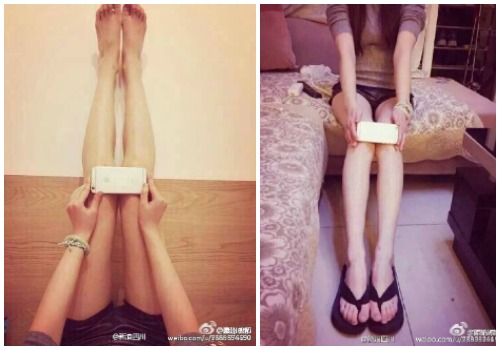

 China Insight11 months ago
China Insight11 months ago
 China Digital10 months ago
China Digital10 months ago
 China Arts & Entertainment11 months ago
China Arts & Entertainment11 months ago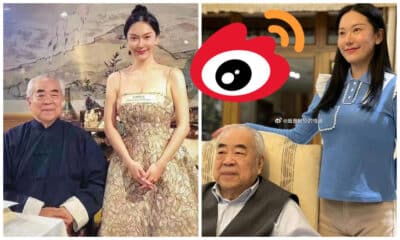
 China Arts & Entertainment12 months ago
China Arts & Entertainment12 months ago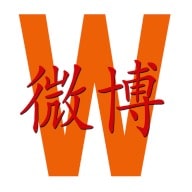






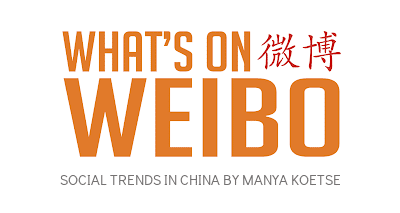


































asfddsa
April 12, 2016 at 11:51 am
“y published two articles (article 1; article 2) criticising the new trends. They pointed out that such beauty standards are not just “unhealthy”, but also indicate that women are being objectified in a masculine society. The articles argue against homogeneous and male-dominated beauty standards.”
There’s no mention of masculine social dominance in these articles…. you just wasted my time reading them.